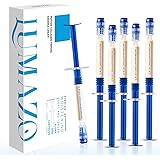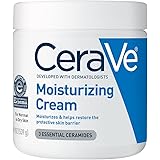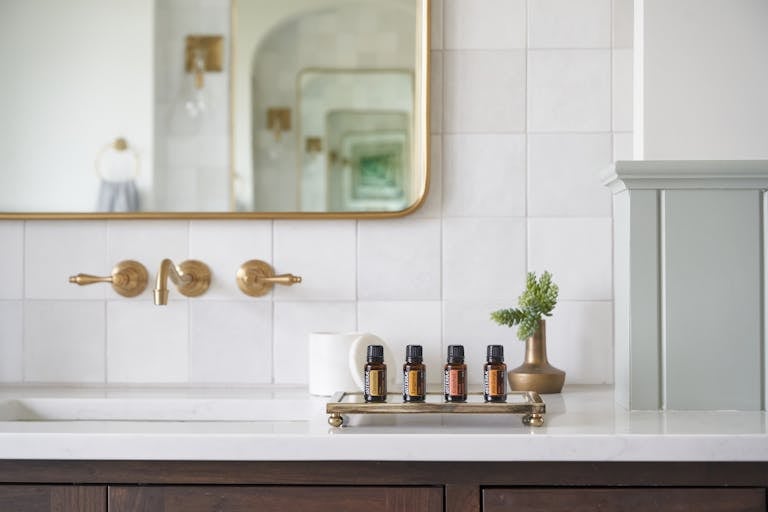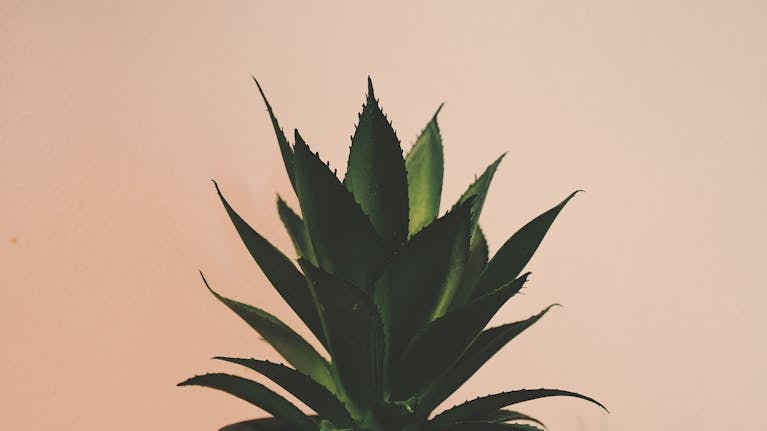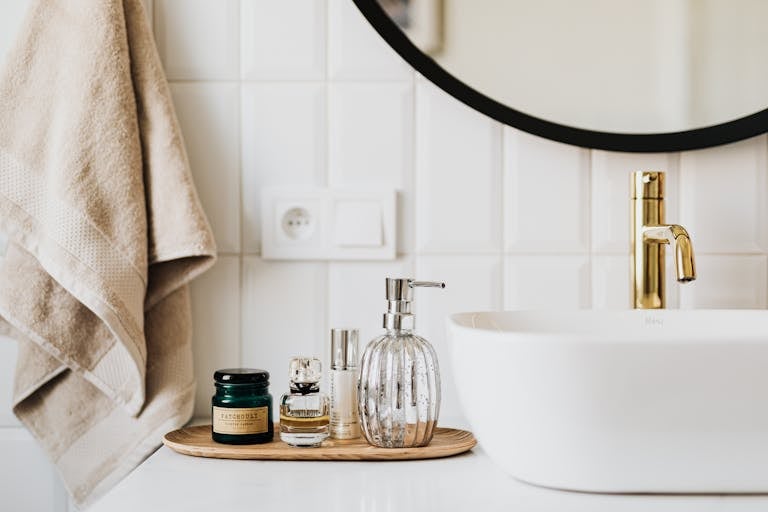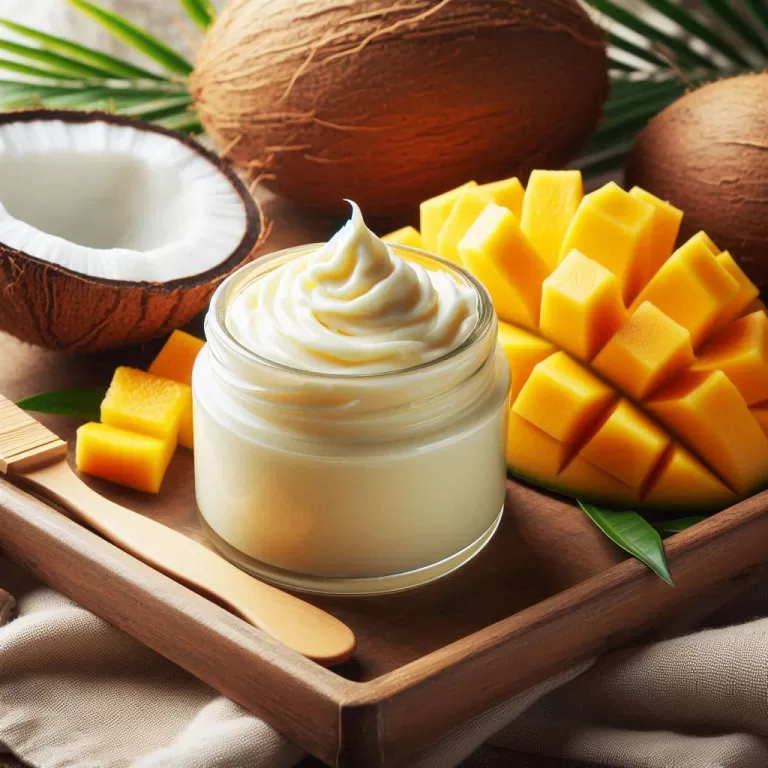Best Natural Anti-Aging Ingredients for DIY Serums – Top Picks for 2024
Have you ever wondered why natural anti-aging ingredients are becoming a must-have in DIY skincare? It’s no secret that our skin shows signs of aging over time, but who says we need to rely on expensive, synthetic serums? Instead, we can whip up our own magic potions using natural ingredients that are not only effective but also kinder to our skin and the planet.
In this guide, we’ll uncover some of the best natural anti-aging ingredients you can incorporate into your homemade serums. From the hydrating power of hyaluronic acid to the antioxidant-rich goodness of vitamin C, we’ll explore how these natural wonders can help you achieve youthful, glowing skin. Let’s say goodbye to harmful chemicals and hello to vibrant, healthy skin the natural way!
Understanding Natural Anti-Aging Ingredients
In our quest for youthful skin, we often look for natural anti-aging ingredients. These ingredients not only help in keeping our skin healthy but also combat signs of aging naturally. Unlike synthetic products, natural ingredients work harmoniously with our skin without causing harm. But, what makes these ingredients so effective? Let’s explore the science behind aging skin and how natural elements can make a difference.
The Science Behind Aging Skin
 Photo by RF._.studio
Photo by RF._.studio
As we age, our skin undergoes several changes. It’s crucial to understand these changes to find the best natural anti-aging ingredients. Here are some key factors involved in the aging process:
- Loss of Collagen: Collagen is a protein that keeps our skin firm and smooth. As we age, our body produces less collagen, causing our skin to lose its structure and form wrinkles.
- Reduction of Elastin: Elastin is another essential protein that helps skin return to its original shape after stretching. With age, the production of elastin decreases, leading to sagging skin.
- Decreased Moisture: Natural oils that keep our skin hydrated diminish over time. This lack of moisture can result in dry, flaky skin.
- Oxidative Stress: Free radicals from UV rays, pollution, and other environmental factors can damage skin cells and accelerate aging.
These biological changes are inevitable, but several natural ingredients can help slow them down. By incorporating these elements into our routine, we can maintain healthier, younger-looking skin.
Wouldn’t it be great to have a skincare routine that makes us feel good and look even better? 🧴
Natural anti-aging ingredients work differently from synthetic ones. They are often loaded with antioxidants, vitamins, and minerals that nourish the skin. Unlike synthetic compounds, which might offer quick fixes but can harm the skin, natural ingredients provide long-lasting benefits without side effects.
For more information on how collagen impacts aging, check out this collagen overview on Healthline.
Moving forward, let’s see how these natural ingredients play a role in skincare and which ones stand out the most.
Top Natural Anti-Aging Ingredients for DIY Serums
Creating your own DIY anti-aging serums can be both fun and effective. Natural ingredients are not only gentle on the skin but are also packed with nutrients that can help keep wrinkles at bay. Several natural anti-aging ingredients can be easily incorporated into DIY serums, each offering unique benefits. Let’s dive into some of the most effective ones!
Hyaluronic Acid
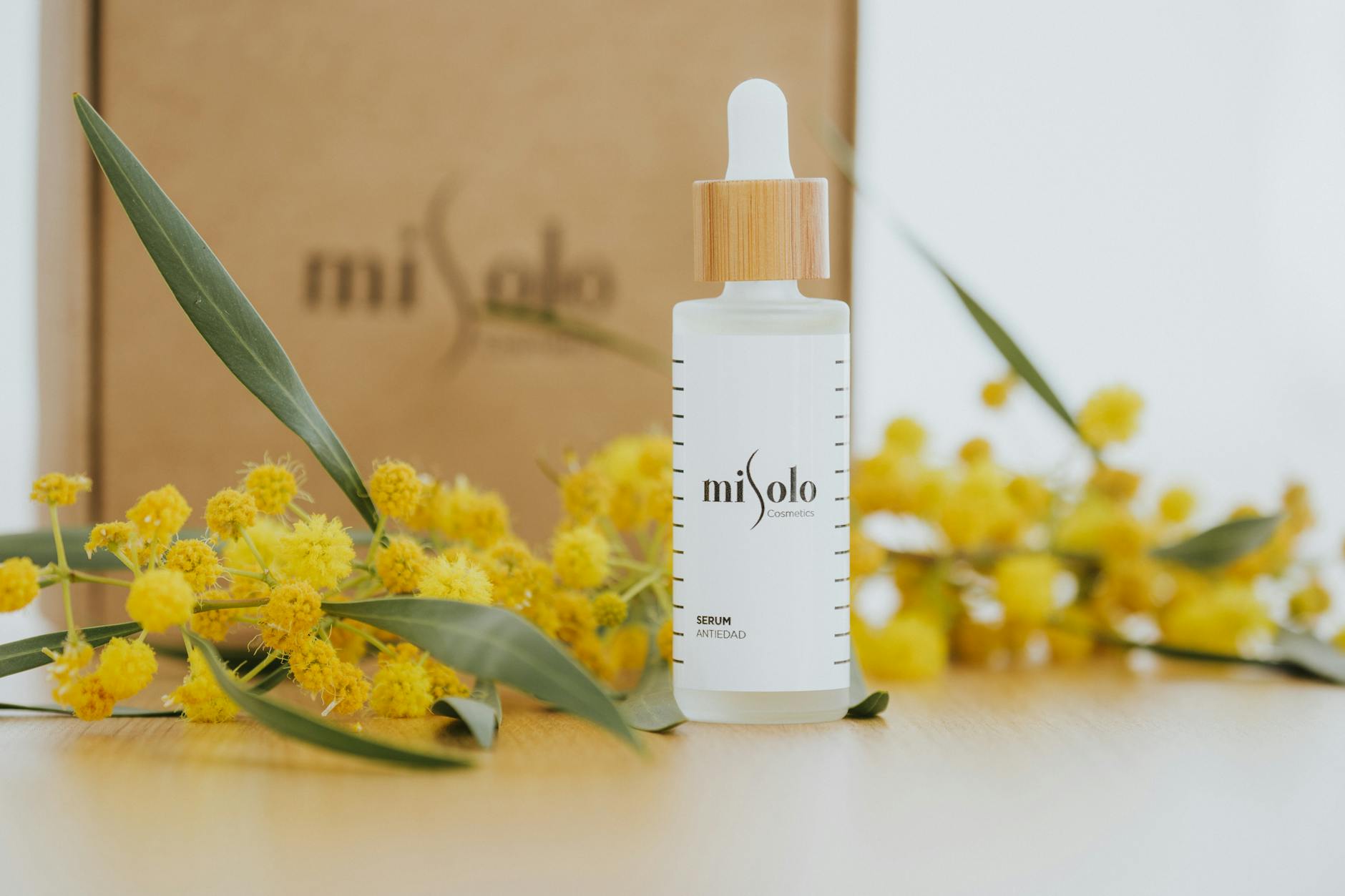 Photo by Misolo Cosmetic
Photo by Misolo Cosmetic
Hyaluronic acid is a powerhouse when it comes to hydration. This natural substance can hold up to 1,000 times its weight in water, making it perfect for hydrating the skin. When added to a serum, hyaluronic acid helps plump the skin, reducing the appearance of fine lines and wrinkles. The result? A youthful and dewy complexion that can make us feel fabulous.
Vitamin C
Vitamin C is a superstar in the world of skincare. Known for its antioxidant properties, this vitamin helps combat free radicals that contribute to aging. It also plays a crucial role in collagen synthesis, which is essential for maintaining firm and youthful skin. Adding Vitamin C to a DIY serum can brighten our complexion, even out skin tone, and enhance overall skin health. For more detailed information on the benefits of Vitamin C, you can check out this article from Healthline.
Rosehip Oil
Rosehip oil is like a multivitamin for your skin. Rich in essential fatty acids and vitamins A and C, it aids in skin regeneration and helps reduce the signs of aging. The oil penetrates deeply, making it excellent for keeping our skin hydrated and soft. Regular use of rosehip oil can improve skin texture and reduce scars and fine lines.
Argan Oil
Argan oil, often referred to as “liquid gold,” is renowned for its moisturizing properties. It is high in vitamin E, which helps in nourishing and protecting the skin. Argan oil is easily absorbed and non-greasy, making it ideal for a daily skincare routine. It can help restore elasticity, reduce inflammation, and keep our skin looking youthful and radiant.
Aloe Vera
Aloe vera is famous for its soothing effects. This natural plant extract is packed with vitamins, minerals, and amino acids that promote healing and reduce skin irritation. Aloe vera is exceptional for calming inflamed skin, and it also has moisturizing properties that help keep the skin smooth and supple. For those with sensitive skin, aloe vera is a must-have in any DIY anti-aging serum.
By incorporating these natural anti-aging ingredients, we can create potent DIY serums that nourish our skin and combat the signs of aging. These ingredients not only provide immediate benefits but also contribute to long-term skin health. Stay tuned for more sections in our comprehensive guide!
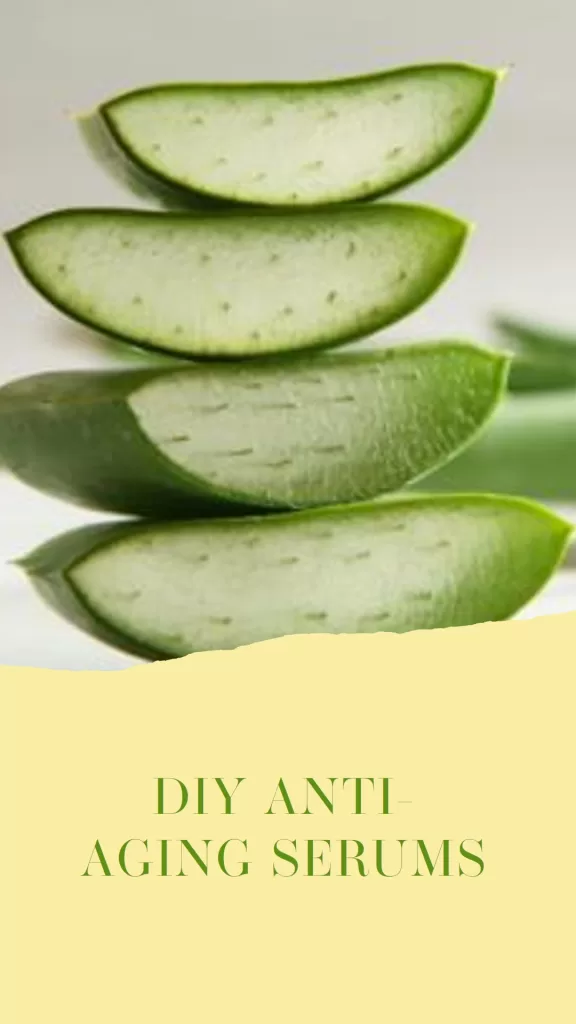
Top 10 Natural Anti-Aging Ingredients for 2024
- Bakuchiol: Nature’s Retinol Alternative
Benefits and scientific backing:
- Clinically proven to reduce fine lines and wrinkles
- Improves skin elasticity and firmness
- Gentler than retinol, suitable for sensitive skin
- Antioxidant and anti-inflammatory properties
- How to incorporate into DIY serums:
- Use at 0.5-1% concentration in oil-based serums
- Mix with carrier oils like jojoba or squalane
- Best used in nighttime formulations
2. Rosehip Oil: Vitamin C Powerhouse
Anti-aging properties and collagen boosting effects:
- Rich in vitamins A, C, and E
- Contains lycopene and beta-carotene for skin renewal
- Promotes collagen production and cell turnover
- Helps fade hyperpigmentation and scars
- Best practices for serum formulation:
- Use as a base oil at 25-100% concentration
- Combine with other carrier oils for added benefits
- Store in dark glass bottles to preserve potency
3. Hyaluronic Acid: The Hydration Hero
Natural sources and synthesis:
- Naturally found in skin, decreases with age
- Can be derived from fermented bacteria or plant sources
- Available in different molecular weights
- Concentration guidelines for maximum effectiveness:
- Use at 1-2% concentration in water-based serums
- Combine low and high molecular weight for best results
- Layer under moisturizer for enhanced hydration
4. Green Tea Extract: Antioxidant Extraordinaire
Free radical fighting capabilities:
- Rich in polyphenols, especially EGCG
- Protects against UV damage and pollution
- Reduces inflammation and redness
- Extraction methods for home use:
- Steep organic green tea in hot water, then cool
- Use as a base for water-based serums
- Incorporate at 3-5% concentration
5. Niacinamide: The Multi-Tasking Wonder
Benefits for skin texture and tone:
- Improves skin barrier function
- Reduces appearance of pores and fine lines
- Evens out skin tone and fades dark spots
- Regulates sebum production
- Proper dosage in DIY formulations:
- Use at 2-5% concentration for optimal results
- Can be combined with most other ingredients
- Dissolve in water phase of serum formulations
6. Squalane: The Moisture Lock
Plant-based sources and benefits:
- Derived from olive oil or sugarcane
- Mimics skin’s natural sebum
- Non-comedogenic and suitable for all skin types
- Enhances skin barrier and prevents moisture loss
- Combination with other ingredients:
- Use as a base oil or at 5-100% concentration
- Excellent carrier for oil-soluble actives
- Pairs well with vitamin C and retinol alternatives
7. Peptides: The Collagen Boosters
Natural peptide sources:
- Derived from rice, soy, or oats
- Silk peptides for skin smoothing
- Copper peptides for collagen synthesis
- Incorporating into homemade serums:
- Use pre-made peptide complexes at 2-10%
- Add to water phase of serum formulations
- Combine with hyaluronic acid for enhanced effects
Lumazo Polypeptide Collagen, Lumazo Polypeptide Collagen Elastic Essence Cream, Micro Molecular Collagens Anti Wrinkle Lotion (6)
$18.99 (as of January 4, 2026 09:51 GMT -04:00 – More infoProduct prices and availability are accurate as of the date/time indicated and are subject to change. Any price and availability information displayed on [relevant Amazon Site(s), as applicable] at the time of purchase will apply to the purchase of this product.)CeraVe Moisturizing Cream, Body and Face Moisturizer for Dry Skin, Body Cream with Hyaluronic Acid and Ceramides, Daily Moisturizer, Oil-Free, Fragrance Free, Non-Comedogenic, 19 Ounce
$18.96 (as of January 2, 2026 09:46 GMT -04:00 – More infoProduct prices and availability are accurate as of the date/time indicated and are subject to change. Any price and availability information displayed on [relevant Amazon Site(s), as applicable] at the time of purchase will apply to the purchase of this product.)8. Vitamin E: The Skin Protector
Synergistic effects with other antioxidants:
- Enhances efficacy of vitamin C
- Protects other oils from oxidation
- Neutralizes free radicals and UV damage
- Proper storage and usage in DIY recipes:
- Use at 0.5-1% concentration in oil-based serums
- Store in dark, airtight containers
- Combine with vitamin C for increased potency
9. Gotu Kola: The Ancient Skin Rejuvenator
Traditional uses and modern research:
- Used in Ayurvedic medicine for centuries
- Stimulates collagen production
- Improves skin firmness and elasticity
- Promotes wound healing and reduces scarring
- Extraction and serum formulation tips:
- Use standardized extract at 3-5% concentration
- Incorporate into water-based or emulsion serums
- Pair with hyaluronic acid for enhanced hydration
10 Coenzyme Q10: The Cellular Energizer
Natural vs. synthetic CoQ10:
- Naturally produced in body, decreases with age
- Synthetic versions are bioidentical and effective
- Protects skin cells from oxidative stress
- Energizes skin for improved cellular function
- Stability and formulation challenges:
- Use oil-soluble form at 0.5-1% concentration
- Protect from light and air exposure
- Combine with vitamin E for increased stability
By incorporating these powerful natural ingredients into your DIY anti-aging serums, you’ll be harnessing nature’s best youth-boosters. Remember to always patch test new ingredients and formulations to ensure compatibility with your skin.
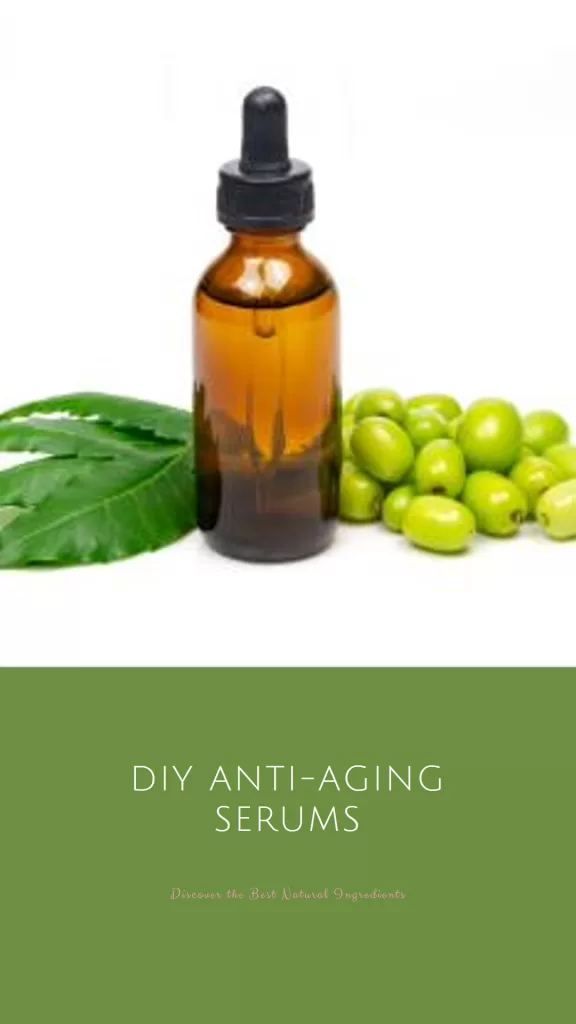
How to Create Your Own DIY Anti-Aging Serum
Making your own DIY anti-aging serum can be both fun and rewarding. Let’s dive into the process and some ingredients you’ll need to create a serum that will make your skin glow and feel youthful.
Choosing the Right Base
When choosing a base for your DIY serum, you have several options including oils, gels, and creams. Each type has its own benefits:
- Oils: Oils are a popular choice for DIY serums because they are natural and easily absorbed by the skin. Some great oils to consider are jojoba oil, rosehip oil, and argan oil. These oils are rich in vitamins and antioxidants which are perfect for anti-aging.
- Gels: If you prefer a lighter texture, you might opt for a gel base. Aloe vera gel is a fantastic choice because it’s soothing and hydrating. It’s also great for people with oily skin as it won’t clog pores.
- Creams: For those who prefer a richer texture, a cream base can be very moisturizing. Shea butter and cocoa butter are excellent options. They are packed with fatty acids and vitamins that help in repairing and rejuvenating the skin.
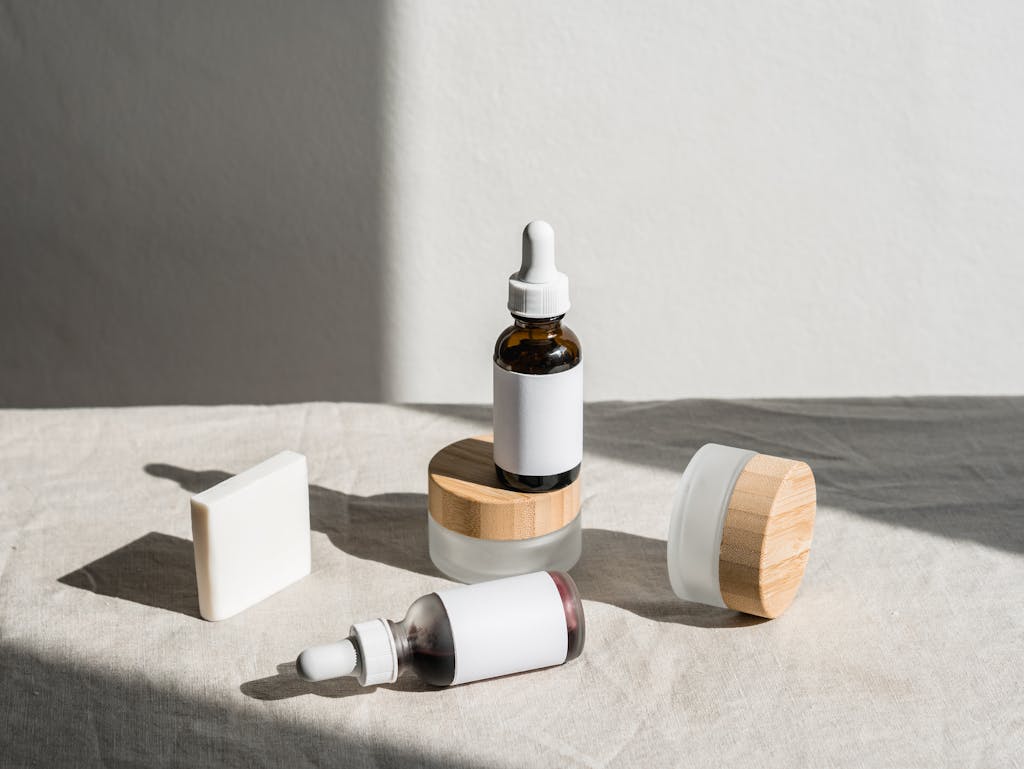
Essential Oils for Added Benefits
To enhance the properties of your serum, consider adding essential oils. Essential oils not only smell wonderful but also have various skin benefits.
Here are some beneficial essential oils you can use:
- Lavender Oil: Known for its calming properties, lavender oil can also help reduce skin redness and inflammation.
- Frankincense Oil: This oil is great for anti-aging as it helps improve the appearance of fine lines and wrinkles. It also promotes cell regeneration, making your skin look fresh and young.
- Rose Oil: Rose oil is famous for its hydrating properties. It helps to lock in moisture and gives a natural glow to your skin.
- Tea Tree Oil: If you have acne-prone skin, tea tree oil is an excellent addition. It has antibacterial properties that help in controlling breakouts while still providing anti-aging benefits.
Adding just a few drops of these essential oils to your base can dramatically improve the effectiveness of your serum.
Remember, making your own anti-aging serum is all about experimenting and finding what works best for your skin type. Don’t hesitate to mix and match different ingredients until you discover the perfect combination that makes your skin feel amazing!
- Basic formulation guidelines:
- Aim for a total of 100% in your formulation
- Start with simple recipes and gradually increase complexity
- Always use distilled water for water-based serums
Basic Serum Formulation Structure
| Component | Percentage Range |
| Carrier Oil/Base | 70-90% |
| Active Ingredients | 10-25% |
| Essential Oils (if used) | 0.5-2% |
| Preservative (if needed) | As per manufacturer’s instructions |
2. Choosing the right carrier oils:
- Consider your skin type and concerns
- Look for non-comedogenic options for acne-prone skin
- Blend different oils for comprehensive benefits
Carrier Oils for Different Skin Types
| Skin Type | Recommended Carrier Oils |
| Dry | Argan, Avocado, Rosehip |
| Oily | Grapeseed, Jojoba, Hemp Seed |
| Combination | Jojoba, Apricot Kernel, Sunflower |
| Sensitive | Calendula-infused, Camellia, Evening Primrose |
3. Proper preservation methods: • Use broad-spectrum preservatives for water-based serums • Consider natural preservatives like Leucidal Liquid SF • Ensure proper pH for preservative effectiveness (usually 3-6)
4. Essential equipment for home formulation: • Digital scale (accurate to 0.01g) • pH strips or digital pH meter • Glass beakers and stirring rods • Dark glass bottles for storage • Mini-fridge for storing temperature-sensitive ingredients
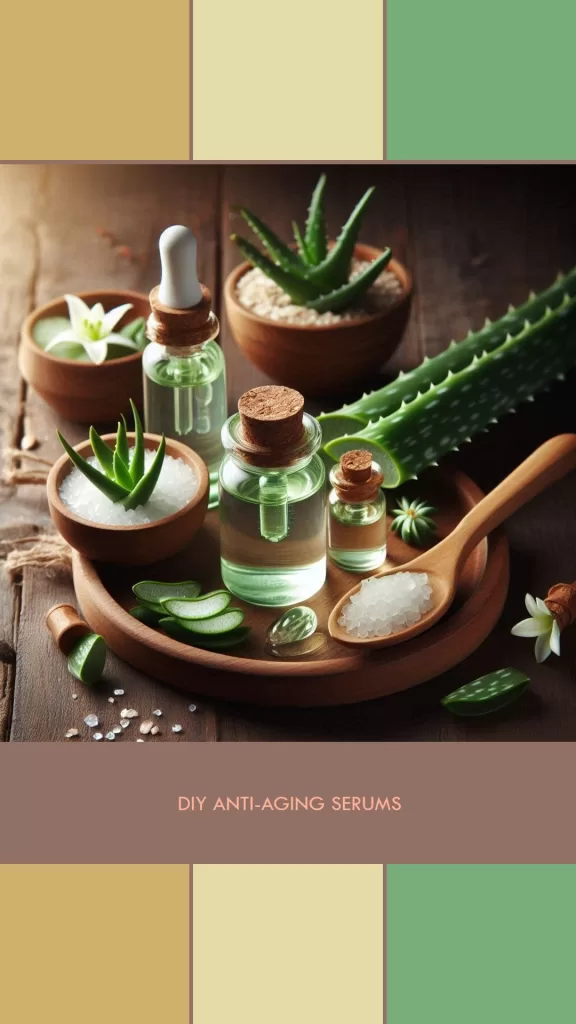
Tips for Using Natural Anti-Aging Serums
Using natural anti-aging serums can make a big difference in your skincare routine. 💆♀️ However, getting the best results doesn’t just depend on the ingredients; how you use the serum matters too. Here are some insider tips to help you maximize the effectiveness of your natural anti-aging ingredients.
Application Techniques
Knowing the right way to apply your serum can make a world of difference. Proper application ensures that your skin absorbs all the beneficial nutrients more effectively. Here are some key techniques you should follow:
- Gentle Massaging: Use your fingertips to gently massage the serum into your skin. This not only helps with absorption but also stimulates blood circulation. Think of it like giving a mini workout to your skin!
- Layering with Other Products: If you use other skincare products like moisturizers or toners, make sure to layer correctly. A good rule of thumb is to apply products from thinnest to thickest consistency. Start with the serum, follow it up with toner, and finish with a moisturizer. This allows each product to be absorbed properly, providing maximum benefits.
- Patting Instead of Rubbing: Instead of rubbing the serum into your skin, try patting it gently. This can prevent skin irritation and helps to lock in the product better.
Common Mistakes to Avoid in DIY Anti-Aging Serums
- Over-complicating formulas: • Start with 3-5 key ingredients and gradually add more • Avoid mixing too many active ingredients, which can cause irritation • Focus on quality over quantity of ingredients
- Ignoring pH levels: • Different ingredients work best at specific pH levels • Use pH strips to test and adjust your formulations • Be aware that some ingredients can alter the overall pH of your serum
Optimal pH Levels for Common Ingredients
3. Using incompatible ingredients: • Avoid mixing vitamin C with niacinamide in high concentrations • Don’t combine AHAs/BHAs with retinol in the same formulation • Be cautious when mixing multiple plant extracts
4. Neglecting proper preservation: • Always use preservatives in water-based formulations • Follow recommended usage rates for preservatives • Regularly check for signs of contamination (change in color, smell, or texture)
| Ingredients | Optimal pH Range |
| Vitamin C (L-Ascorbic Acid) | 2.5-3.5 |
| Niacinamide | 5.0-7.0 |
| Hyaluronic Acid | 4.0-7.0 |
| Retinol | 5.5-6.5 |
eos Shea Better Cashmere Body Wash, Vanilla Cashmere, Moisturizing, pH Balanced Body Wash, Creamy Gel Formula, Paraben & Phthalate Free, Sensitive Skin, 16 fl oz
$9.98 (as of January 2, 2026 09:46 GMT -04:00 – More infoProduct prices and availability are accurate as of the date/time indicated and are subject to change. Any price and availability information displayed on [relevant Amazon Site(s), as applicable] at the time of purchase will apply to the purchase of this product.)CeraVe Moisturizing Cream, Body and Face Moisturizer for Dry Skin, Body Cream with Hyaluronic Acid and Ceramides, Daily Moisturizer, Oil-Free, Fragrance Free, Non-Comedogenic, 19 Ounce
$18.96 (as of January 2, 2026 09:46 GMT -04:00 – More infoProduct prices and availability are accurate as of the date/time indicated and are subject to change. Any price and availability information displayed on [relevant Amazon Site(s), as applicable] at the time of purchase will apply to the purchase of this product.)The Future of Natural Anti-Aging Ingredients
- Emerging research and promising new ingredients: • Plant stem cells (e.g., Swiss apple stem cells) • Epigenetic ingredients that influence gene expression • Microbiome-friendly prebiotics and postbiotics
- Sustainable sourcing trends: • Upcycled ingredients from food industry by-products • Vertical farming for consistent, high-quality botanicals • Blockchain technology for ingredient traceability
- Advancements in natural extraction methods: • Supercritical CO2 extraction for purer extracts • Ultrasonic extraction for increased yield and potency • Enzyme-assisted extraction for improved bioavailability
Emerging Natural Anti-Aging Ingredients to Watch
| Ingredient | Potential Benefits |
| Bakuchiol | Retinol-like effects without irritation |
| Snow Algae | Activates longevity gene, protects from oxidative stress |
| Tremella Fuciformis (Snow Mushroom) | Hydration comparable to hyaluronic acid |
| Prickly Pear Seed Oil | Rich in vitamin K, brightens dark circles |
| Moringa Oil | Potent antioxidants, purifies and detoxifies |
Frequency of Use
How often you use your serum can significantly impact its effectiveness. Here’s what you need to know about the frequency of application:
- Twice Daily for Maximum Effect: For most natural anti-aging serums, using them twice a day—once in the morning and once before bed—yields the best results. This ensures your skin gets a consistent supply of nutrients throughout the day and night.
- Adjust According to Skin Type: If you have sensitive skin, you might want to start with applying the serum once a day and gradually increase the frequency. On the other hand, oily or combination skin types may require more frequent application for optimal results.
- Consistency is Key: Just like with any good habit, consistency is crucial. Make it a part of your daily routine, and you’ll notice more radiant and youthful skin over time.
For more tips on maintaining healthy skin with natural ingredients, check out this comprehensive guide on using natural remedies.
By following these tips, we can maximize the benefits of natural anti-aging serums, ensuring healthier, younger-looking skin.
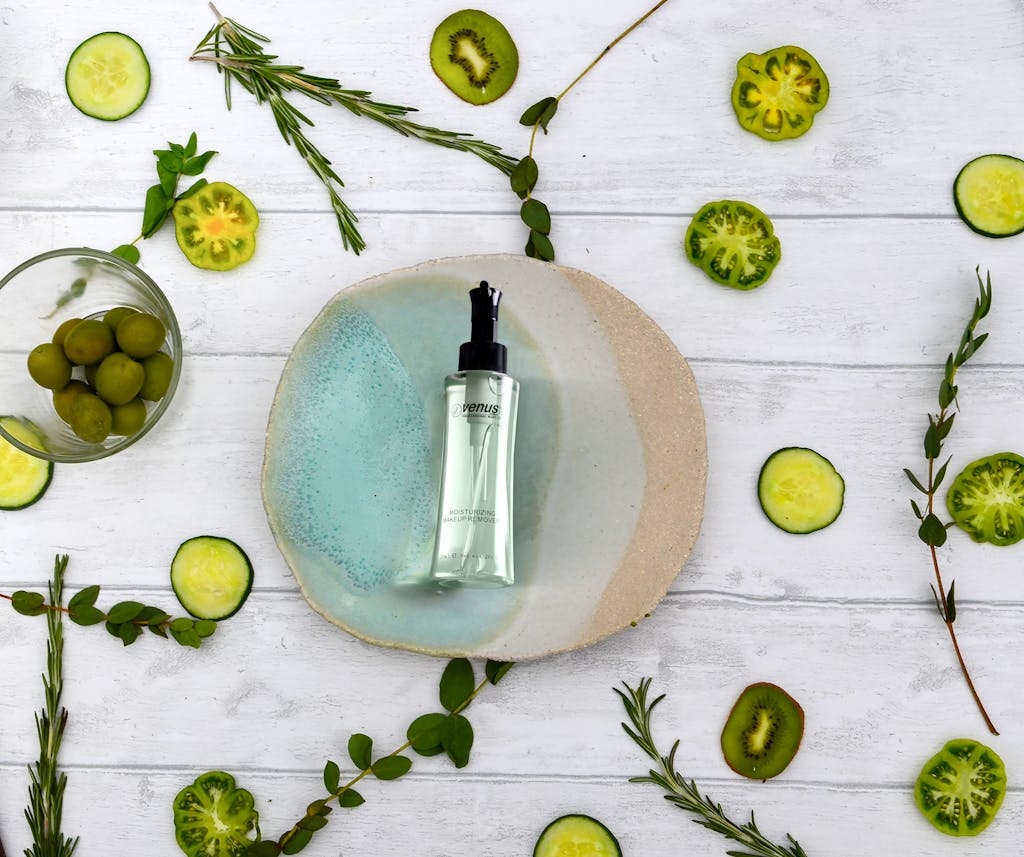
Additional Lifestyle Tips for Anti-Aging
We all want to age gracefully, don’t we? While using natural anti-aging ingredients is a fantastic start, adopting a holistic approach can make a significant difference in how our skin ages. Here, we’ll explore some essential lifestyle tips that complement your anti-aging routine.
Dietary Considerations: Suggest Foods That Promote Skin Health
Our skin is a reflection of what we eat. A balanced diet filled with skin-loving nutrients can do wonders for maintaining a youthful glow. Here are some foods that can help:
- Fruits and Vegetables: Packed with vitamins and antioxidants, fruits like berries and vegetables like spinach support skin health.
- Fatty Fish: Rich in omega-3 fatty acids, salmon and mackerel help keep skin supple and hydrated.
- Nuts and Seeds: Almonds and sunflower seeds are great sources of vitamin E, which protects skin from oxidative damage.
- Whole Grains: Foods like brown rice and oats are full of fiber and nutrients that promote healthy skin.
- Green Tea: High in antioxidants, green tea can reduce inflammation and slow skin aging.
By including these foods in our diet, we provide our skin with the building blocks it needs to repair itself and stay youthful.
 Photo by Zen Chung
Photo by Zen Chung
Sun Protection: Emphasize the Necessity of Using Sunscreen in Conjunction with Natural Anti-Aging Ingredients
Sun exposure is one of the biggest culprits when it comes to premature aging. Even if we use the best natural anti-aging ingredients, skipping sunscreen can undo all our efforts. Here’s why sun protection is crucial:
- Preventing Wrinkles and Fine Lines: UV radiation breaks down collagen, leading to wrinkles. Sunscreen helps maintain our skin’s elasticity.
- Avoiding Age Spots: Sunspots, also known as age spots, are a result of prolonged sun exposure. Sunscreen can prevent these dark spots from forming.
- Overall Skin Health: Sunscreen protects against harmful UV rays, reducing the risk of skin cancer.
We should aim to use a broad-spectrum sunscreen with at least SPF 30 every day, even on cloudy days. It’s a simple step that can protect our skin and keep it looking youthful for years to come.
For more information on the benefits of sunscreen, you can check out this comprehensive guide on sun protection.
By taking these additional lifestyle steps, we can enhance the effectiveness of our natural anti-aging ingredients and keep our skin looking its best.
Conclusion
Natural anti-aging ingredients have proven their effectiveness in DIY serums for achieving healthier, more youthful skin. We encourage everyone to explore these options and harness their power for a radiant complexion.
Feeling inspired to craft your own serum? Give it a try and experience the benefits firsthand. Have thoughts or questions about the ingredients? Drop a comment below—we’re excited to hear from you!
Here’s to beautiful, glowing skin with natural anti-aging ingredients!


